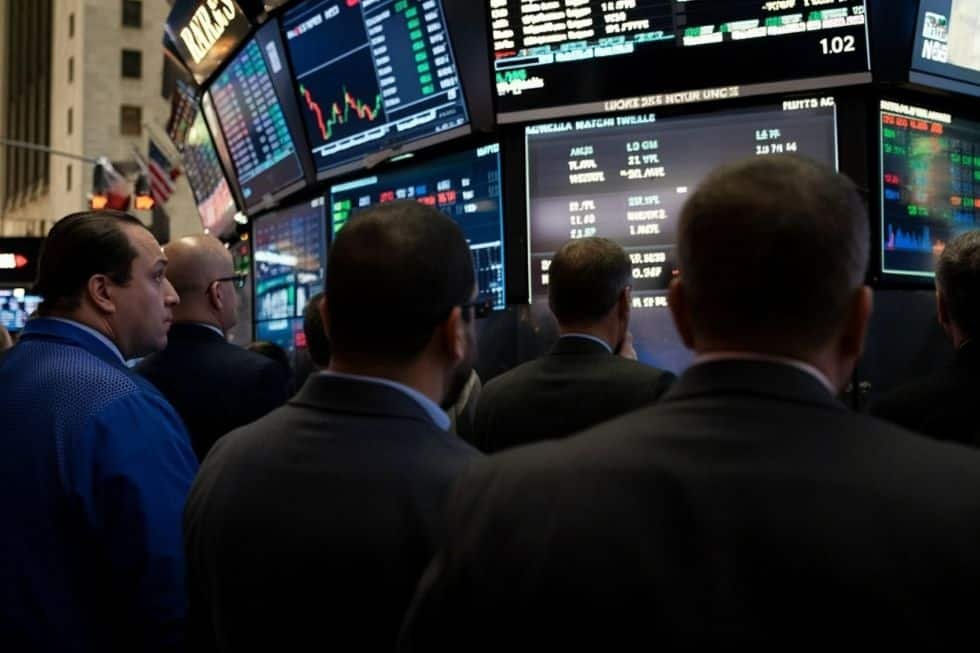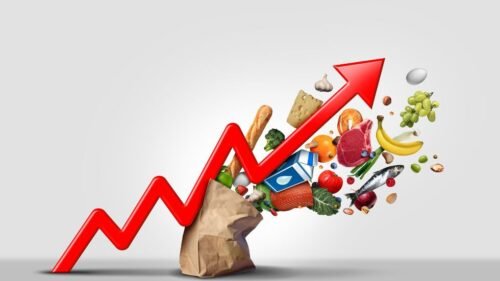If you’ve been following the news these days, it’s understandable if you’ve gotten a bit dizzy from oscillating stock market reports — daily tales of soaring, plummeting, surging and free-falling stock prices. At first glance, you wouldn’t be completely wrong to think of this as a story about uncertainty over tariffs, the future of the Federal Reserve chair and other goings on in Washington.
But you might be missing a much bigger story, about a much larger question: who gets to make policy in America — voters and their elected leaders? Or Wall Street? Daily fluctuations in market indices are essentially an indicator of how the finance class is feeling.
Did voters who want our country to build things again and pay Americans healthy wages to do so elect a populist administration that is now trying to make that happen? Markets go down.
Is the economy endlessly locked in a predictable, market fundamentalist status quo, with an environment favorable to competition-eliminating merger & acquisition deals, labor arbitrage, price hikes, stock buybacks and offshoring? Markets go up.
Is US President Donald Trump — frustrated with a Federal Reserve chair critics say is slow to adjust rates — preparing to cashier him, ending Fed independence (or Wall Street capture, depending on how you see it) and shifting power to elected leaders? Markets go down.
Did Trump, sufficiently spooked by market swings, back down? Markets go back up.
The bull or the ballot
The Wall Street Journal, referred to as the “voice of banks” by US Senator Josh Hawley, recently argued that the markets have the “whip hand” over Trump. What we are seeing now is a situation where investment firms — not the president, not Congress and not voters — are getting to decide what the policies of the United States get to be.
More specifically, Wall Street is not reacting to the regulatory landscape as much as Trump is making policy around pacifying Wall Street. Finance can create pain points — threatening everything from layoffs to price hikes to shortages, to outright armageddon when its preferred exploits are disincentivized.
Trying to make coherent policy aimed at fixing problems in America based upon the erratic daily mood swings of Adderall-addled traders possessed by a singular desire to make screen pixels turn green, sitting slack-jawed in front of CNBC 25 hours a day, is impossible. We must balance interests.
We’re familiar with labor strikes — when workers take to the picket lines and gum up business to protest bad deals from management. What is happening now is the opposite — a capital strike, where the finance class is creating, or threatening to create, intolerable pain for retirees, workers, consumers and stockholders to force voters and their elected officials to stand down.
Still, Wall Street’s power wouldn’t loom so large if officials didn’t yield to it. Trump, in particular, has complicated things by reversing course under market pressure. If Trump were serious about the noble goal of reshoring manufacturing, he could reduce volatility by staying firm. That would allow businesses to adjust without the rug later getting pulled out from under them.
Chicken or the egg
Some might argue that Wall Street fluctuations are real responses to investors expecting diminished profits from protectionist policies, and we must avoid upsetting the animal spirits of the markets. This explanation is unconvincing. It relies on the assumption that no policy goal is ever important enough to summon up the temerity to disturb unabated financialization in the near term to achieve long-term goals. It also relies on another assumption: that trying to reshore manufacturing would somehow create an irrecoverable, worse-than-1929 crash that businesses could never adjust to.
In March 2020, during the early days of COVID, multiple halts were imposed on trading due to a plunging stock market and widespread fears of the apocalypse — only for corporate profits to go on to rise substantially in a few short years. 2020–2021 ended up being the most profitable era on record for many businesses.
Past crashes caused by financial recklessness — whether that be the subprime lending crisis, the bursting of bubbles or banking panics — seemed like the end of organized commerce as we knew it. None were. It is hard to imagine that achieving important national security goals, such as employing Americans to build things we need, even with market swings and near-term pain, would somehow mean the end of American commerce.
This discourse is a separate debate from one about whether or not ambitions of bringing manufacturing back to the United States can be done as easily as President Trump believes. Moreover, a well-organized industrial policy, comprehensive and enduring legislation from Congress and other measures are needed to create success that tariffs alone cannot deliver. But policymaking writ large should not simply be whipped by the daily ticker of the stock market.
Wall Street should not get a heckler’s veto. America has never shied away from ambitious goals and moonshot projects. Undoing the immense damage of 45 years of offshoring key industries and stripmining communities throughout the country may be its most ambitious yet.
When we’ve had success in the past, we have put those ambitions and the people and businesses needed to make them a reality at the forefront of public policy. To have success now, we must put Americans and once great, now atrophied, home-grown businesses — not just banks — at the center once again.
[Casey Herrmann edited this piece]
The views expressed in this article are the author’s own and do not necessarily reflect Fair Observer’s editorial policy.
Support Fair Observer
We rely on your support for our independence, diversity and quality.
For more than 10 years, Fair Observer has been free, fair and independent. No billionaire owns us, no advertisers control us. We are a reader-supported nonprofit. Unlike many other publications, we keep our content free for readers regardless of where they live or whether they can afford to pay. We have no paywalls and no ads.
In the post-truth era of fake news, echo chambers and filter bubbles, we publish a plurality of perspectives from around the world. Anyone can publish with us, but everyone goes through a rigorous editorial process. So, you get fact-checked, well-reasoned content instead of noise.
We publish 3,000+ voices from 90+ countries. We also conduct education and training programs
on subjects ranging from digital media and journalism to writing and critical thinking. This
doesn’t come cheap. Servers, editors, trainers and web developers cost
money.
Please consider supporting us on a regular basis as a recurring donor or a
sustaining member.
Will you support FO’s journalism?
We rely on your support for our independence, diversity and quality.








Comment